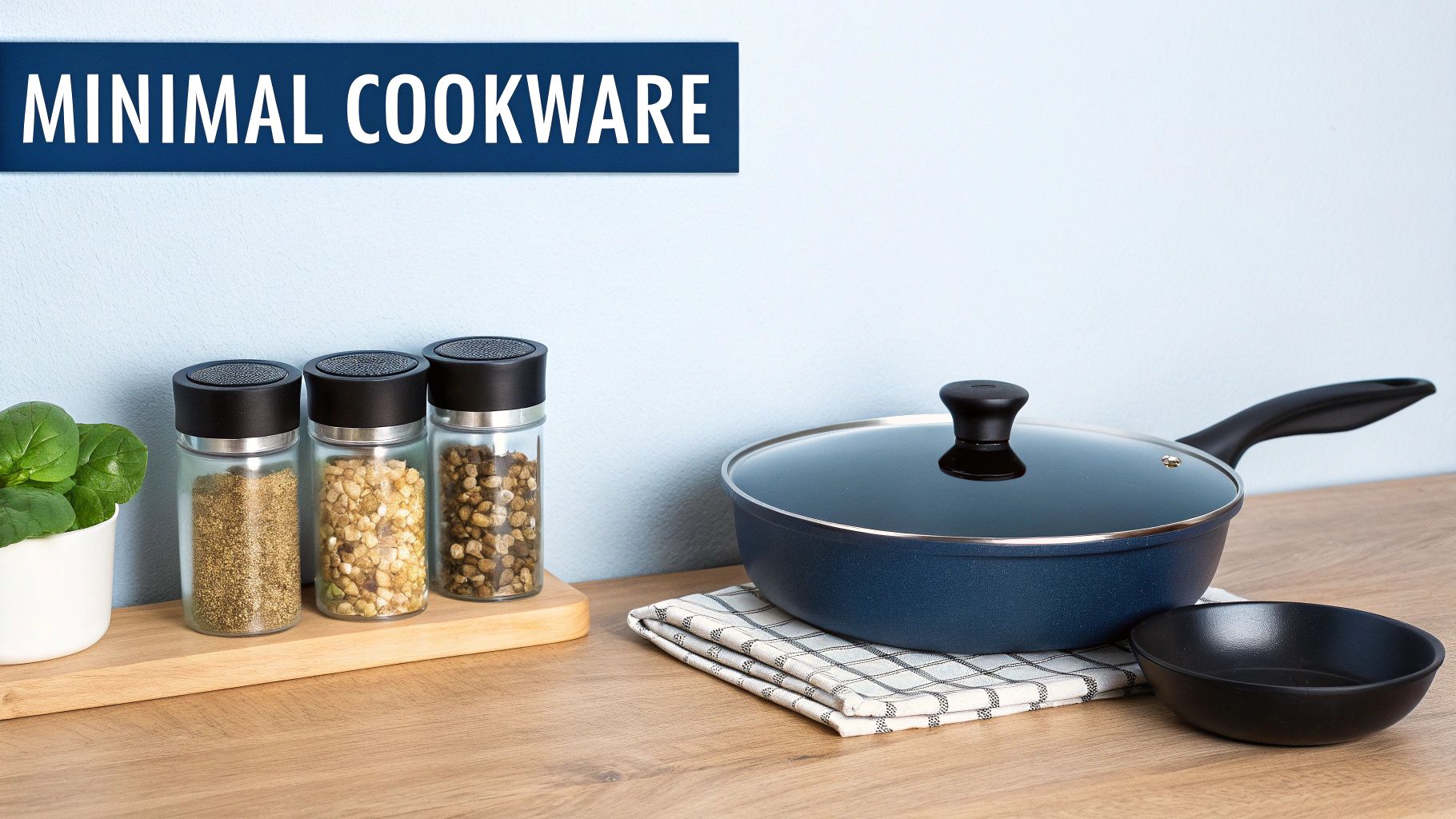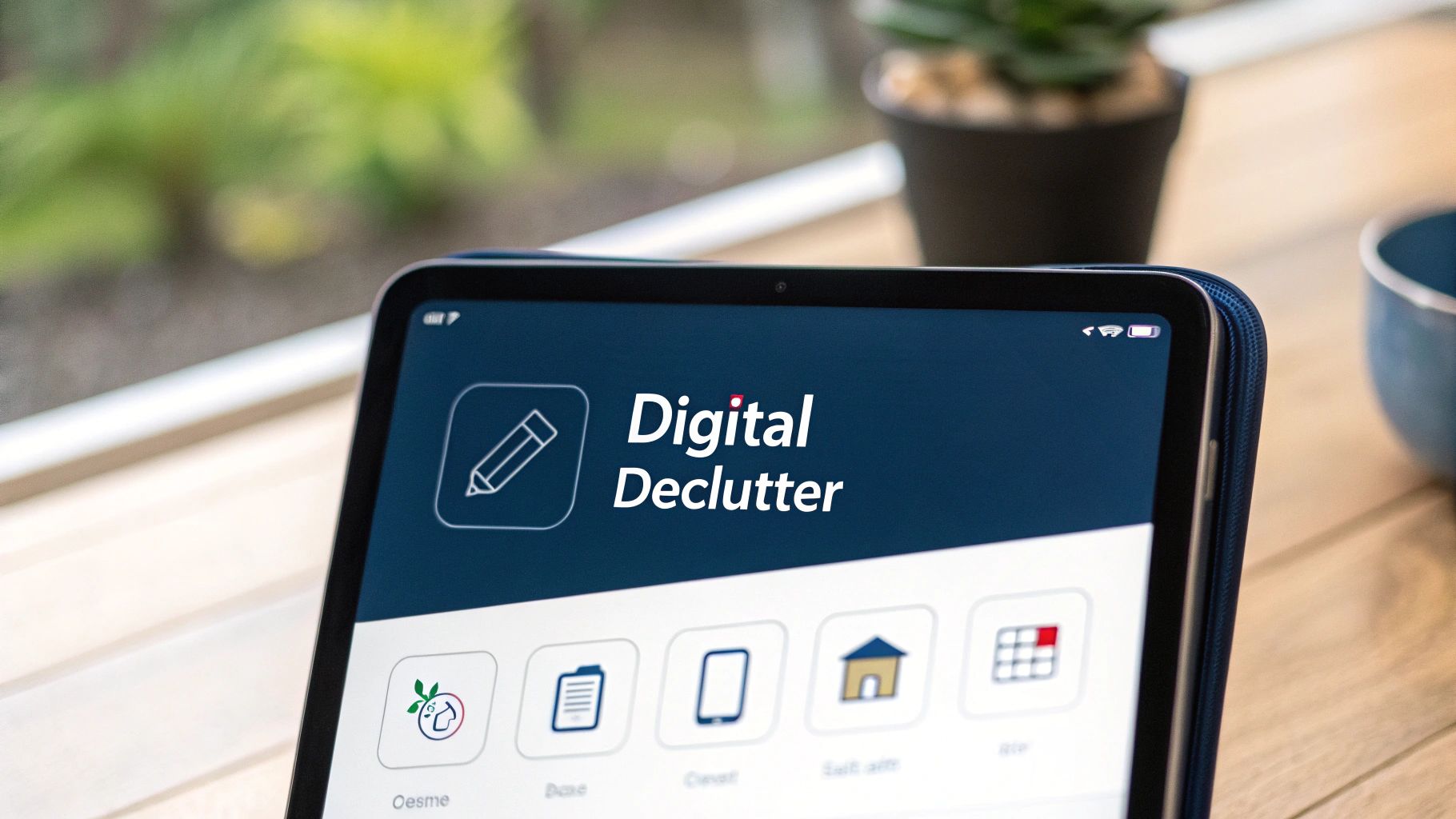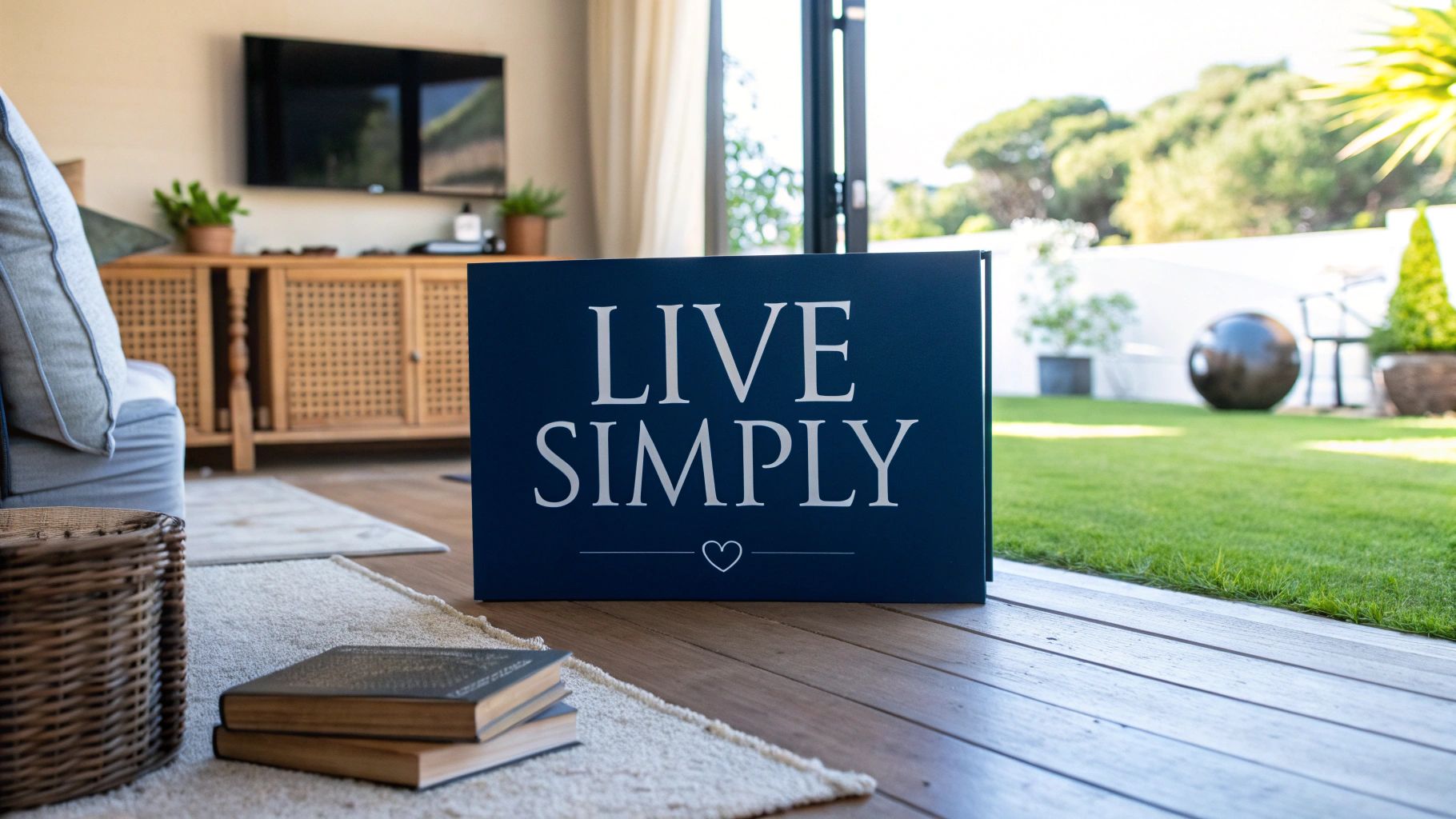Understanding Modern Minimalism: Breaking Through the Myths

When most people hear "minimalism," they picture bare walls and empty rooms. But real minimalism goes far beyond aesthetics - it's about living with intention and carefully choosing what deserves space in your life. Rather than following strict rules about owning less, modern minimalists focus on keeping what brings genuine value while removing what doesn't.
Beyond the Stereotypes: Defining True Minimalism
Many assume minimalism means giving up comfort and personality, but this misses the point entirely. The goal isn't deprivation - it's gaining clarity about what matters most to you. For some, this means owning fewer physical items. For others, it means limiting social media use or simplifying their schedule. The key is identifying your priorities and removing obstacles that get in the way of what you value most.
The Growing Movement and What's Driving It
More people are embracing minimalist principles, but not always for the reasons you might expect. According to recent studies, only 11% of Americans currently identify as minimalists, while 26% say they want to adopt this approach. The research shows women tend to be more interested than men, with the 35-54 age group showing the strongest interest. Learn more in this CivicScience report on minimalism trends. People are drawn to minimalism because it promises less stress, more financial freedom, and a smaller environmental impact.
Practical Steps Towards a Minimalist Lifestyle
You don't need to transform your entire life overnight. Small, consistent changes often lead to lasting results. Here are some practical ways to begin:
- Start with one area: Pick a single drawer, shelf, or category of items rather than trying to tackle everything at once
- Use the 90/90 Rule: If you haven't used something in the past 90 days and don't plan to use it in the next 90 days, consider letting it go
- Question new purchases: Before buying anything, ask yourself if it will truly improve your life or just add to your clutter
These simple steps can help you build momentum toward a more intentional way of living. As you practice making thoughtful choices about your possessions and commitments, you'll likely find yourself naturally gravitating toward what matters most.
Building Your Minimalist Wardrobe: Strategic Simplification

Creating a minimalist wardrobe isn't about following strict rules or owning a specific number of items. Rather, it's about carefully selecting clothes you genuinely enjoy and wear often. When you build a wardrobe that fits your real lifestyle, you save time and mental energy each morning while getting dressed.
Identifying Your Core Style
The first step is getting clear on your personal style preferences. Take some time to think about your typical week - what activities fill your days? What clothes make you feel comfortable and confident? Pay attention to which colors, materials and fits you naturally gravitate toward. Understanding these basics helps you make smarter choices about which pieces deserve space in your closet. This clarity also makes future shopping decisions much easier.
Choosing Quality Over Quantity
A key principle of minimalist wardrobes is investing in well-made pieces that last, rather than constantly buying cheap, disposable fashion. Focus on classic styles in neutral shades that work well together. These versatile items become the foundation of your wardrobe, easily mixed and matched for different occasions. While quality pieces cost more upfront, they often prove more economical over time since they don't need frequent replacement.
Letting Go of Excess
Getting rid of clothes you don't wear can feel difficult at first. Start small by removing anything that doesn't fit, is damaged, or simply doesn't make you feel good when you wear it. Consider donating usable items so they can benefit others. For perspective, the average American household spends $1,500 yearly on new clothes, with much ending up barely worn before being discarded. This wasteful cycle feeds into fast fashion, resulting in 87% of clothing materials getting dumped in landfills. Learn more about consumer waste statistics here.
Building a Sustainable Shopping Strategy
After decluttering, shift your focus to making thoughtful purchases. Before buying something new, ask yourself if it truly adds value to your wardrobe. Choose pieces that work with multiple outfits you already own. This mindful approach helps avoid impulse buys while building a wardrobe that's both practical and personal. As a bonus, shopping with intention reduces your environmental impact by keeping unnecessary items out of landfills.
Mastering Mindful Consumption: Beyond Simple Decluttering

Getting rid of excess stuff is just the beginning of living with less. The real shift happens when you change how you think about what you own and buy. This mindset change affects not just your space, but your mental clarity and financial wellbeing. It's about making choices that match what matters most to you.
Evaluating Needs Versus Wants: The Foundation of Mindful Consumption
At the heart of buying less is knowing the difference between needs and wants. This takes honest reflection about your motivations. Ask yourself: "Do I really need this item, or do I just want it right now?" A warm winter coat meets a real need, while the latest fashion trend usually fills a temporary want. Understanding this helps you make better choices about what deserves space in your life.
Implementing Waiting Periods: A Powerful Tool Against Impulse Buys
One simple but effective practice is adding a waiting period before buying non-essential items. This could mean waiting 24 hours, a week, or even a month, depending on the purchase and your habits. Taking this pause helps you determine if something truly fits your values and prevents snap decisions you might regret. Often, you'll find the urge to buy fades during the waiting period.
Navigating Consumer Culture: Staying True to Your Minimalist Values
Living with less in a world that pushes you to buy more isn't easy. But with some practical steps, you can stick to your values:
- Mindful Gift Giving and Receiving: Let friends and family know you prefer experiences or consumable gifts over physical items. If you receive unwanted gifts, pass them along thoughtfully to someone who needs them.
- Managing Impulse Purchases: Know what triggers your urge to buy - whether it's online ads, sales, or social media. Combat these triggers by unsubscribing from marketing emails or limiting time on shopping sites.
- Creating Sustainable Shopping Habits: Focus on buying quality items that last longer. Support brands that match your values around sustainability and ethical production. Recent studies show this approach is growing - 18% of people worldwide now identify as "Minimalist Seekers," driven by economic factors and environmental concerns. Learn more about this trend here.
Building better habits around buying and owning takes time and practice. But as you use these strategies, you'll develop a healthier relationship with your possessions and find more satisfaction in living simply. This thoughtful approach benefits both your personal life and the planet.
Creating a Minimalist Digital Environment: Finding Balance in the Connected Age
Just as a cluttered home can feel chaotic, our digital spaces often overflow with endless notifications, emails, and information. The impact of digital clutter can be just as draining as physical mess. Creating a minimalist digital environment starts with being selective about what we allow into our online world.
Decluttering Your Digital Space: First Steps to Freedom
Start your digital declutter like you would clean out a messy closet - by removing what you don't need or use. Unsubscribe from email newsletters that no longer interest you. Delete apps that sit unused on your phone. Create a simple folder system for your computer files. This initial cleanup brings a sense of calm and makes it easier to stay organized going forward.
Setting Healthy Social Media Boundaries: Reclaiming Your Time and Attention
While social media helps us stay connected, it can quickly become overwhelming. The constant stream of updates and notifications often leads to wasted time and unnecessary stress. Take control by setting clear limits - perhaps checking platforms only at specific times, turning off push notifications, or taking regular breaks. These boundaries help you focus on what matters most in your life.
Maintaining Productivity While Reducing Screen Time: Practical Strategies
Many worry that less screen time means getting less done. In reality, a simpler digital setup often leads to better focus and more productivity. Here are some practical ways to work smarter:
- Email Management: Check and respond to emails at set times instead of reacting to every notification
- Photo Organization: Regularly clean up your photo library by removing duplicates and unwanted images
- Digital Asset Decluttering: Keep important files in clearly labeled folders for quick access
These small changes add up to create a more focused workflow. When you're not constantly switching between tasks and notifications, you can concentrate better and finish work faster.
Building a Digital Ecosystem That Supports Your Goals
Your digital environment should make life easier, not more complicated. Choose apps and tools that truly help you accomplish your goals. When you thoughtfully organize your online space, you gain more control over your time and attention. This leads to less stress, better focus, and a stronger sense of purpose in how you use technology.
The Psychology of Living With Less: Understanding Your Relationship With Stuff

While most advice about minimalism focuses on practical tips for decluttering, the real benefits come from understanding our deeper connection to physical possessions. This means taking an honest look at why we accumulate things, what emotions we attach to them, and how living with less can improve our mental wellbeing.
Decision Fatigue and the Burden of Choice
Every day, we make hundreds of small choices that slowly drain our mental energy. From picking out clothes to deciding what to buy, these constant decisions add up to create decision fatigue. A simpler lifestyle naturally reduces these daily choices. For example, having a small, coordinated wardrobe means you spend less mental energy on outfit decisions each morning.
Stress and the Cluttered Environment
Research shows that our physical environment directly impacts our mental state. When our space is messy and disorganized, our brain has to process all that visual chaos, leading to increased stress and anxiety. Regular decluttering and thoughtful organization can create a calmer home environment that helps reduce daily stress.
The Emotional Barriers to Letting Go
One of the biggest hurdles in simplifying our lives is the emotional attachment we form with our belongings. Objects often become linked to specific memories, relationships, or how we see ourselves. This makes letting go feel like losing part of our identity or precious memories. Understanding and working through these emotional ties is essential for successfully adopting a simpler lifestyle.
Minimalism and Personal Growth
Recent data shows that while only 17% of Americans consider themselves minimalists, 23% want to embrace this lifestyle. This gap suggests a growing interest in simpler living, especially since 61% of Americans rate their lives as at least somewhat complex, according to a YouGov survey. By pushing us to examine what truly matters, minimalism becomes a powerful tool for personal development and self-discovery.
Maintaining Momentum and Building Resilience
Creating lasting change takes time and persistence. Like any lifestyle shift, there will be setbacks and moments when old habits try to creep back in. The key is building resilience through mindful choices about what we bring into our lives, setting clear boundaries, and staying grateful for what we have. These practices help us stay focused on the benefits of living with less, even when faced with pressure to consume more.
Building Sustainable Minimalist Habits: Your Daily Practice Guide
Moving to a simpler life takes time and consistent effort. Just like brushing your teeth becomes automatic, minimalist habits need to be woven into your daily routines until they feel natural. Let's look at practical ways to make minimalism stick for the long term.
Morning and Evening Routines: Setting the Tone for a Minimalist Day
The way you start and end each day shapes your mindset. A simple morning might begin with quick tidying of your nightstand, five minutes of quiet reflection, and picking clothes from a well-edited closet. This helps prevent decision fatigue early on. At night, spend a few minutes straightening up, planning tomorrow, and laying out what you'll wear. These bookends create a sense of order and peace.
Regular Reset Practices: Maintaining a Clutter-Free Environment
Despite good daily habits, stuff tends to pile up. That's why scheduling regular decluttering sessions is key. Pick one small area each week - maybe a kitchen drawer or bookshelf - and sort through it methodically. Once a month, clean up your digital life by unsubscribing from emails, removing unused apps, and organizing files. These regular check-ins keep clutter from becoming overwhelming.
Maintenance Systems: Making Minimalism Effortless
The secret to lasting change is creating simple systems that work automatically. The "one in, one out" approach means donating an old item whenever you buy something new, which naturally limits accumulation. Another helpful habit is having set spots for everyday items and putting them back right after use. These small routines prevent mess before it starts.
Customizable Frameworks for Different Lifestyles
There's no one-size-fits-all version of minimalism. A family with kids faces different challenges than someone living alone in a studio apartment. The key is adapting the core ideas to fit your life. This might mean focusing on shared experiences over toys for families, or using vertical storage in small spaces. The goal is finding what brings you peace and clarity, not following strict rules.
Ready to explore a life of less and gain more in return? Learn how to maximize your potential by integrating the lessons of successful entrepreneurs and financial strategists on The Covered Call Podcast. Discover the power of creating a life aligned with your values and goals, and unlock a new level of personal and financial freedom.

